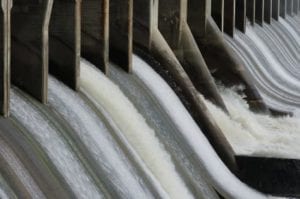When dams are built they have an impact not only on the flow of water in the river, but also on the people who live downstream and in the surrounding ecosystems.
By placing data from close to 6 500 existing large dams on a highly precise map of the world’s rivers, an international team led by McGill University researchers has created a new method to estimate the global impacts of dams on river flow and fragmentation. The key components of the team’s dam assessment method are two indices that describe river fragmentation and river regulation. The river fragmentation index (RFI) is a measure of the way that a river’s natural flow path has been disrupted by the creation of dams or by barriers that allow for the transfer of water between basins or towards irrigation areas, for example. The river regulation index (RRI) is a measure of the proportion of the river water that can be stored in reservoirs, and thus affects the natural fluctuation and properties of river flow downstream.By combining these two indices, the researchers have arrived at a way of assessing the impact of any existing or planned dam.
So, for example, the Danube is severely impacted by fragmentation effects but is relatively weakly affected in terms of flow regulation due to many dams with relatively small reservoirs. The Murray-Darling basin in southern Australia, by contrast, is only weakly affected by fragmentation, but is heavily impacted by flow regulation, due to fewer but larger reservoirs. Click here to read part 1







